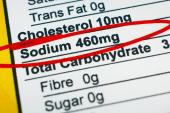Countries With Sodium Targets Have the Least-Salty Processed Meats
China, which has no sodium targets, had the saltiest fish and meat across the study of five countries.

The amount of sodium in processed meat and fish varies widely, according to a study of frequently consumed products in five countries. China, which had the highest sodium content overall for these products, currently has no sodium targets in place, while the other four countries have voluntary or mandatory targets.
“This implies that the target-based strategy is effective in lowering sodium levels in foods,” write Yuzhu Song (Hebei Medical University, Shijiazhuang, China), and colleagues in BMJ Open. “Therefore, setting feasible or further lower sodium targets is urgent. Regular evaluation is also needed to ensure its robust implementation.”
Unlike developed countries where 80% of dietary sodium comes from packaged food, sodium in Chinese diets has traditionally derived from home cooking and seasoning. However, rapid economic growth and urbanization have led to an increase in consumption of processed food, Song and colleagues note.
Sodium-reduction targets are on the radar of public health officials. In May, the World Health Organization (WHO) released new global benchmarks for sodium levels in more than 60 food categories. Just last week, the US Food and Drug Administration issued initial recommendations aimed at providing measurable goals for sodium content in commercially processed, packaged, and prepared foods.
According to Song and colleagues, manufacturers can start by making simple changes to existing foods. A 10% to 15% reduction in sodium will go undetected, they note, “and the product reformulation could be done step-by-step.” However, they acknowledge that manufacturers may have their own concerns, including how to reformulate their product without shortening the shelf life.
Co-author Puhong Zhang, PhD (The George Institute at Peking University Health Science Center, Beijing, China), told TCTMD in an email that he is leading an additional study in collaboration with researchers in the United Kingdom and Australia to understand how China can best align with other countries in achieving sodium-reduction targets.
Zhang said the study will “analyze the target achievement rate for different categories of prepackaged food in China, and a mixed method will be adopted to conclude whether the WHO benchmark is adoptable and how to promote the benchmark in China.”
Differences Suggest Room for Salt Reduction
For the study, the researchers compared the salt content of processed meat and fish from the United Kingdom, United States, Australia, China, and South Africa. The packaged foods were obtained from major supermarket chains and included processed meats and meat alternatives like bacon, burgers, sausages, cured meats, and meat spreads, as well as raw and roasted chicken and ham. The fish categories included canned, frozen, and chilled varieties.
Overall, China had the highest amount of salt in both processed meat and fish products (1,050 mg/100 g), followed by the United States (655 mg/100 g), South Africa (571 mg/100 g), Australia (489 mg/100 g) and the United Kingdom (432 mg/100 g). But, there were notable differences. While roasted chicken, chilled fish, pâté, and meat spreads sold in China had at least four times the sodium content as the same products from the other countries, China had the lowest sodium levels in bacon, frozen meat, salami and cured meats, dried meat, and frozen fish.
Only 10% of the fish and meat products in the United Kingdom and the United States, and no more than 5% in China and South Africa, met low-sodium criteria levels developed by the United Kingdom. A 100 g serving size of just one product could potentially contribute one-third to one-half of the WHO daily maximum sodium intake in all five countries, the researchers say.
They add that the large differences in sodium seen among similar products and across brands within the same countries, “indicate that there is still a lot of room for salt reduction.”
L.A. McKeown is a Senior Medical Journalist for TCTMD, the Section Editor of CV Team Forum, and Senior Medical…
Read Full BioSources
Song Y, Li Y, Guo C, et al. Cross-sectional comparisons of sodium content in processed meat and fish products among five countries: potential for feasible targets and reformulation. BMJ Open. 2021;11:e046412.
Disclosures
- The study was funded by the Ministry of Science and Technology of People’s Republic of China and the National Institute for Health Research, London.
- Song and Zhang report no relevant conflicts of interest.





Comments